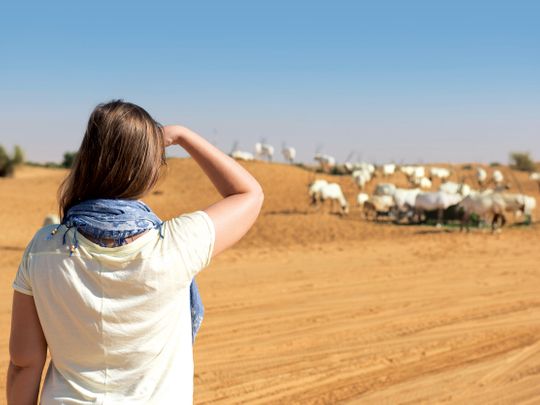
Studies reportedly show that exposure to the outdoors reduces health issues in children, and especially during the pandemic, also reduces their behavioural issues.
I’m sure our parents, who were consciously trying to help us become responsible and well-behaved individuals, did not think that the time we spent outdoors would make a difference. In fact, they spent a large portion of our childhood trying to figure out where we had disappeared to in our enormous gardens and they would have kept us indoors a bit longer if they could! I also believe that our parents would not be convinced that we had “fewer” behavioural issues and were they alive today, they would probably have said, “Really? Then why are you three weird and ill-behaved despite all that time you spent outdoors?”
Jokes aside, we revelled in those hours we spent in the lap of nature as children, but we never really imagined that we could give our children a similar kind of experience — until we were posted to a small military station in the desert.
True, it was a far cry from the greenery of the places where we had grown up, and when I first saw that endless expanse of sand, broken only by thorny scrub and dry brush, I was dismayed. There were no trees to climb, no places where kids could hide with a friend or with a pet, have exciting encounters with teeming wildlife around — and reappear hours later with all kinds of adventures to talk about! What’s more, for months on end the desert was unrelentingly hot during the daylight hours and there didn’t seem to be any kind of wildlife to study.
We were in the middle of the Great Outdoors but there was apparently nothing to do there!
But that was only at first glance.
Within a very short time we discovered that there is nothing quite like the magic of the desert.
Not very far from our makeshift accommodation was a sixty-foot high sand dune and we often visited it after sundown in summer and during the day in winter. With a few handy “sleds” made out of old cardboard cartons, the kids careened down the gentle side of the slope while we plunged down the steeper side, sinking into the soft sand that protected us even when we tumbled over — and then all of us climbed up again, once again sinking into the soft sand and falling back two feet for every three feet that we advanced!
As for the “missing” wildlife, how wrong we were!
We had several not-so-pleasant confrontations with colourfully hued locusts, extraordinarily large spiders and scorpions and sand-coloured saw scaled vipers, and many delightful sightings of birds that had flown down from northern countries to enjoy the winter amid the many small lakes and water bodies that dotted the area. We rarely left home without our copy of Salim Ali’s The Book of Indian Birds to help us identify the different kinds of ducks, eagles, storks, and other birds we saw in their multitudes.
Sure, there were no hiding places for the children — or for us, since we were very much a part of their outings — but that didn’t mean that there was nothing hidden in the sand. Over dozens of visits to that sand dune and to a nearby site that once housed an ancient civilisation, we unearthed many treasures in terracotta. Not only did we have things to speculate about and talk about in the immediate aftermath of our discoveries, but we had those “mysteries” to unravel for the next few decades.
Long after we had left the desert, the desert had not left us — and with so much to reminisce over, our time outdoors helped all of us, not just the children.
— Cheryl Rao is a writer based in India








